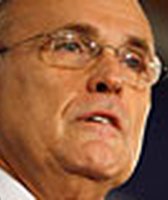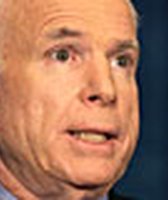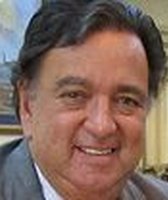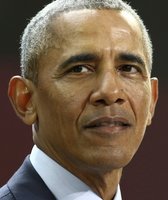Stand up for the facts!
Our only agenda is to publish the truth so you can be an informed participant in democracy.
We need your help.
I would like to contribute
SUMMARY: Rudy Giuliani established a child welfare agency in New York to help get foster children adopted, but calling that part of a "culture of life" that helped lower abortion rates looks like a rewrite of history.
Bruce F. Berg, who chairs the political science department at Fordham University, has an archive that may be the envy of anyone interested in New York City politics. It documents every mayoral news conference in the city dating back to 1996.
Berg has DVDs of what was said and how they said it, covering all but the first two years of the Rudy Giuliani era.
Does he have any records of Giuliani speaking about a program to reduce abortions by encouraging adoptions?
"They don't exist," says Berg, who used the database in writing his new book, New York City Politics: Governing Gotham, a thorough analysis of the city's major institutions.
The question is apt as Giuliani, long a pro choice advocate, seeks the GOP nomination in a presidential primary where anti-abortion voters carry particular heft. Faced with charges that he's not conservative enough on abortion, Giuliani is saying that as mayor he developed a plan to decrease abortions by increasing adoptions and creating a "culture of life" in New York City.
In August, Giuliani said he wanted to take the approach national, and he made it one of his one of his "12 Commitments to the American People."
He also aired the idea at the May 3 Republican debate, saying he hates abortion and wouldn't recommend it to anybody. He spoke of his time as mayor, saying: "I encouraged adoptions. Adoptions went up 65-70 percent. Abortions went down 16 percent."
While in Iowa last month, he said that a President Giuliani would streamline the adoption process and promote personal responsibility, and that the result would be fewer abortions.
"I would like to do that for America," he said. "I would like to see adoptions increase dramatically and I would like to see women considering abortion have that option available to them."
The statements are based in large part on the fact that while he was mayor, Giuliani created the Administration for Children's Services (ACS), which worked to get foster kids adopted.
Public agency adoptions went up during the Giuliani years, but whether his statements accurately reflect the numbers is open to question. Public documents that articulate the mission of ACS and report its progress make no mention that reducing abortion was part of the agency's mission.
The image of the former mayor as an abortion foe is not one New Yorkers remember. Berg taps into his database of mayoral news conferences:
Dec. 30, 1997: Giuliani says he supports abortion rights in general.
July 22, 1998: Giuliani says he supports the Roe v. Wade decision.
Sept. 14, 1998 and April 5, 2001: Giuliani criticizes the GOP's abortion stance.
"He had the aura of a pro choice mayor in New York and he milked that for all it was worth," Berg said. "He certainly made that part of his persona as mayor."
Mary Alice Carr, vice president for Communications at NARAL Pro-Choice New York, still has a proclamation signed by Giuliani that made Jan. 22, 1998 "Roe v. Wade Anniversary Day" in the city. She also provided a copy of a NARAL questionnaire from 1997, signed by Giuliani.
Would he support unrestricted Medicaid funding for abortions? Would he oppose legislation that made minors get parental or court approval before getting an abortion? Did he agree with the Roe v. Wade decision?
Giuliani circled Yes, Yes and Yes.
To be sure, he says he remains pro choice and asks Republican voters to respect his view and judge him on his overall record as a conservative.
How would promoting adoptions decrease abortions? It's hard to find any statistical evidence that links one to the other. Giuliani's recent statements invite two interpretations.
The first is that he would work on separate but parallel lines to increase adoptions and limit abortions. The other is that the two are directly related — that making adoption easier gives mothers a more ready alternative to abortion.
Giuliani's campaign aides say both interpretations are accurate.
Though his effort to reduce abortions may not have been spelled out while he was mayor, they say it was evident in the way he created "a much better New York." You could see it, they said, in his efforts to get people off welfare, improve children's lives, create new jobs, promote personal responsibility, clean the city and reduce crime — all of which resulted in "a safe city that leads people to choose life."
Carr, the NARAL spokeswoman, said she doubted Giuliani steered mothers away from abortions by making adoptions easier. She cited data showing that the average age of adopted children typically ranges from 5 to 8 years old, depending on the state.
"You can't say it was infants," Carr said.
Another question is whether Giuliani had an impact on the city's adoption and abortion rates beyond the national forces that were, and still are, at work.
Adoptions through child welfare agencies had been on the rise for years. Then came the Adoption and Safe Families Act of 1997, which got states pursue adoptions with more urgency.
New York City appears to have been "ahead of the curve" in the 1990s, said Pam Davidson, government relations director for the National Council for Adoption. "I think that was where their focus was," she said.
Abortions, meanwhile, have been declining across the nation since the early 1980s, with a big drop from 1990-96, when Giuliani was mayor.
The Guttmacher Institute, a widely recognized non-profit that focuses on sexual and reproductive health issues, cites several reasons for the trend. Among them: increased use of long-acting hormonal contraceptives, a decline in teen pregnancy prompted by smarter contraceptive use, less sexual activity among teens, and a reduction in abortion providers that makes abortion access more difficult. Giuliani's aides note that abortions dropped 16.8 percent in New York City during the mayor's tenure, compared to 12.8 percent for the nation. The difference, they said again, was the culture of life he established.
Our Sources
Centers for Disease Control and Prevention, Abortion Surveillance —1993 and 1994, Table 3
Centers for Disease Control and Prevention Abortion Surveillance — 2001, Table 3
NYC Administration for Children's Services, 2003 Year End Review, page 14
The Alan Guttmacher Institute, Trends in Abortion in the United States, 1973-2002
National Council for Adoption Adoption Factbook IV
FactCheck.org, May 4, 2007, analysis of Giuliani adoption statement
Interviews with Giuliani campaign staff, Sept. 27 and 28. U.S. Department of Health and Human Services Administration for Children & Families, Adoption data — Child's Finalization Age
Interview with Pam Davidson of the National Council for Adoption, Sept. 27, 2007. Interview with Bruce F. Berg, associate professor of political science, Fordham University, Sept. 27, 2007.







































